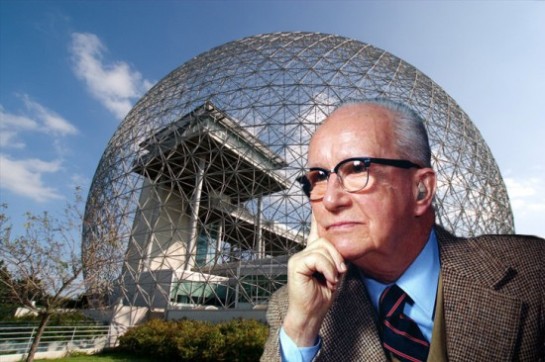Richard Buckminster Fuller: Visionary Architect and Philosopher
Richard Buckminster Fuller: Visionary Architect and Philosopher
Richard Buckminster Fuller (1895-1983) was an American architect, systems theorist, and futurist known for his innovative designs and big ideas. Though trained as an architect, Fuller actually built very few structures in his lifetime. He was far more focused on coming up with visionary and sustainable design principles that could be applied broadly to solve humanity’s problems. Some of his most famous ideas and inventions include the geodesic dome, the Dymaxion house, and the Dymaxion car.
Accomplishments and Innovations
Fuller’s geodesic dome design, first unveiled in the late 1940s, was lightweight, strong, inexpensive, and easy to assemble. It would go on to be used for everything from weather radar stations to exhibition pavilions. The dome dispersed stresses efficiently and thus allowed for large enclosed spaces without internal supports.
Fuller also designed and built prototypes of futuristic, circular houses called Dymaxion houses. The houses were designed to be compact, movable, and resource-efficient with features like rainwater collection and fog catchers.
The Dymaxion car, which Fuller worked on in the 1930s, was also very aerodynamic and fuel-efficient for its time. Only a few prototypes were built, though the unique design with three wheels and the ability to turn in a tight circle attracted a lot of attention.
In addition to inventing specific structures and objects, Fuller originated many broad concepts like Spaceship Earth (the idea of the earth as a closed system requiring careful resource management) and synergistics (the behaviour of whole systems unpredicted by the behaviour of their parts). He was deeply concerned about sustainability even before environmentalism rose to prominence.
Thoughts on Work and Humanity
Fuller was very influential in spreading the idea that automation and technology should lead humanity to live lives of leisure rather than toil. He argued that the purpose of machines was to let humans live more efficiently and happily, but instead machine labour had become something feared as a threat to employment. In his 1963 book Ideas and Integrities, Fuller wrote:
“It is a fact today that one in ten thousand of us can make a technological breakthrough capable of supporting all the rest. The youth of today are absolutely right in recognising this nonsense of earning a living. We keep inventing jobs because of this false idea that everybody has to be employed at some kind of drudgery because, according to Malthusian-Darwinian theory, he must justify his right to exist.”
Fuller believed that humanity could utilise technology and proper resource management to eliminate poverty and that “there is no such thing as a ‘right to a job'”. He advocated visions like a “design science revolution” leading to a new society where resources were distributed based on need rather than through jobs.
Legacy and Impact
Fuller left behind a legacy of ideas both broad and specific about improving human shelter, transportation, and existence through ingenuity and efficiency. He was a deeply moral and humanistic thinker who wanted design principles and the distribution of resources to benefit all humanity, not just those who already held power and wealth. Though many of his innovations were not mass produced during his lifetime, Fuller’s ideas went on to influence generations of engineers, architects, mathematicians, and humanitarians.

